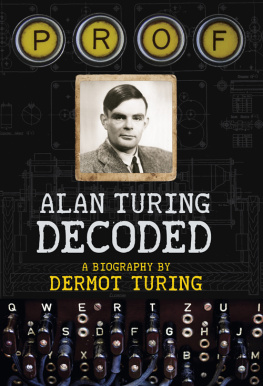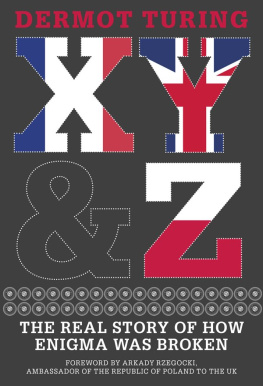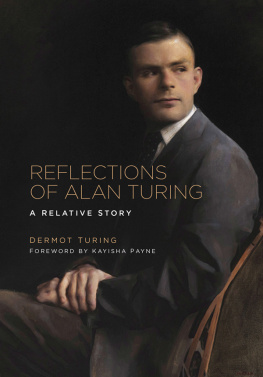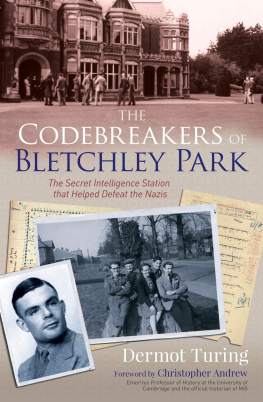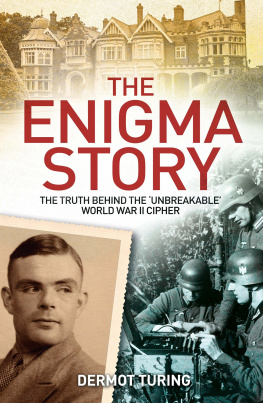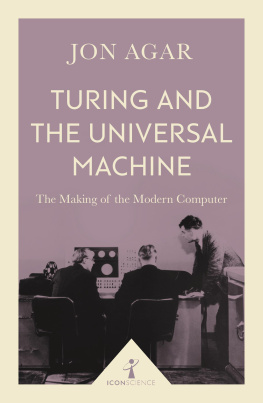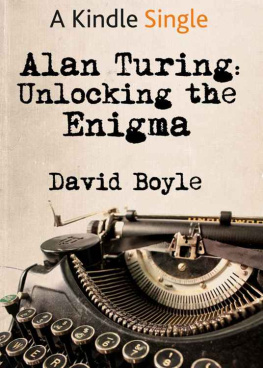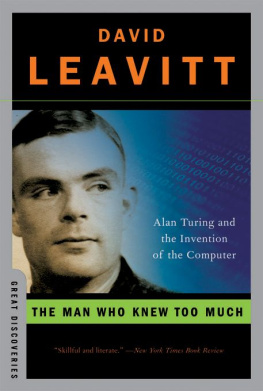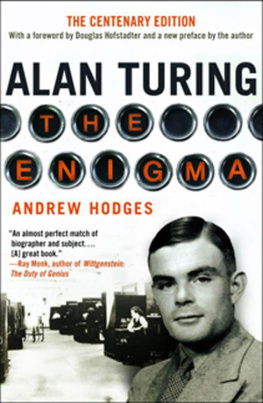
CONTENTS

Blue Plaques in Hampton, Maida Vale, Manchester and Wilmslow. At Bletchley Park, where Alan Turing did the work for which he is best remembered, there is no plaque but a museum exhibition.
ALAN TURING is now a household name, and in Britain he is a national hero. There are several biographies, a handful of documentaries, one Hollywood feature film, countless articles, plays, poems, statues and other tributes, and a blue plaque in almost every town where he lived or worked. One place which has no blue plaque is Bletchley Park, but there is an entire museum exhibition devoted to him there.
We all have our personal image of Alan Turing, and it is easy to imagine him as a solitary, asocial genius who periodically presented the world with stunning new ideas, which sprang unaided and fully formed from his brain. The secrecy which surrounded the story of Bletchley Park after World War Two may in part be responsible for the commonly held view of Alan Turing. For many years the codebreakers were permitted only to discuss the goings-on there in general, anecdotal terms, without revealing any of the technicalities of their work. So the easiest things to discuss were the personalities, and this made good copy: eccentric boffins busted the Nazi machine. Alan may have been among the more eccentric, but this now outdated approach to studying Bletchleys achievement belittles the organisation which became GCHQ, and distracts attention from the ideas which Alan, among others, regarded as far more important than curious behaviour.
I am sceptical about that solitary genius picture of Alan Turing. It doesnt fit well with what little was said about him at home during my childhood, and it doesnt fit with the personal recollections of those work colleagues of his with whom I have had opportunities, over the years, to talk. A man called Prof by his friends who knew he wasnt a professor and so were teasing him, gently wasnt shut away from intellectual or social interaction. Who, in fact, was Alan Turing, and where did his ideas come from?
Of course, these questions have been explored before and from a variety of angles. Yet some of the people who influenced and mentored Alan have perhaps received less attention than their due: notably, M.H.A. (Max) Newman, who was not only an intellectual equal but also provided a compass to help steer Alans career and a social anchorage in a less rarefied family setting. There is a temptation to portray Alan as a victim of his childhood and schooling; I dont think that is accurate or fair. There is also a tendency to zoom in on the last tragic years of his life, to view the whole of his existence through that Shakespearian lens, and then to define Alan Turing by reference to his sexuality or suicide. Again, I think that is an error. To complement my personal viewpoint I have had access to new documents and sources which were not available even to Alans most recent biographer. Moreover, a wealth of material has been made available to me in the form of first-hand recollections of those who lived and worked alongside Alan; I wanted to allow those voices to be heard again.
I have been constantly surprised and delighted by the enthusiasm which each enquiry I made relating to this project was received. So many people I contacted were willing to volunteer additional information and suggestions, going far beyond any ordinary duty in the help offered to me. I had the privilege of interviewing Donald Bayley and Bernard Richards who were able to share their personal recollections with me and answer my foolish questions a big thank you for letting me intrude into their lives. I was also allowed to preview documents scheduled for release to the National Archives, not available to previous biographers, and for that I am grateful to the Director of GCHQ. I should also like to acknowledge in particular the varied contributions of Shaun Armstrong, Jennifer Beamish, Claire Butterfield, Tony Comer, Barry Cooper, Daniela Derbyshire, Helen Devery, Juliet Floyd, Rainer Glaschick, Joel Greenberg, Sue Gregory, Kelsey Griffin, John Harper, David Hartley, Rachel Hassall, Cassandra Hatton, Kerry Howard, Paul Kellar, Miriam Lewis, Barbara Maher, Gillian Mason, Patricia McGuire, Christopher Morcom QC, Charlotte Mozley, Harriet Nowell-Smith, Brian Oakley, James Peters, Brian Randell, Hlne Rasse, David Ridgway, Rachel Roberts, Isobel Robinson, Sir John Scarlett, Lindsay Sedgley, Susan Swalwell, Turings past and present, Cate Watson and Abbie Wood. Nor would I have been able to succeed without the friendly and useful assistance from the staffs of the British Library, Chester Records Office and various local libraries in Cheshire, the National Archives, and the Science Museum; and (in the US) the Library of Congress, the Mudd Manuscript Library at Princeton and the National Archives Records Administration. In none of these places was anyone anything other than welcoming, helpful and informative.
However, I have to pay tribute in particular to Andrew Hodgess masterly biography Alan Turing: the Enigma. I bought my copy in February 1984 as soon as it came out. It is a big book and it covers the ground with majesty as well as rigour. Nothing certainly not what follows between these covers can possibly stand up to it. It has been my constant reference source. It has stood thirty years without need of fundamental correction. Sure, there are materials available now which were not open to Andrew when he did his research, but these colour in points of detail, and affirm his conclusions where there was limited evidence available to him. My perspective is of course different, otherwise this book would not have been worth writing, but I commend it to the reader whose appetite I have managed to stimulate.
Finally, a note on quotes and sources and so forth. I have not had to be as rigorous with quotations as an academic work would require. With Alans letters I did not want to distract the reader with repeated use of sic to prove (when it is true) that I can spell better than him, and I have been sparing of sic in other quoted passages where spelling or typographical conventions have changed during the last century. An ellipsis [] is not used in every instance where words in the original have been omitted, but restricted to those places where the reader might be misled by unacknowledged omission of words. Sources for quoted passages can be found in the section on notes and accreditations, and these should be referred to for the unedited originals. Errors are to be blamed on me, not others.
Dermot Turing
St Albans, UK

John Turings signature is prominent among the Great and Good of British India, including Sir William Medows. Better-known names on this page include Eyre Coote, Lord Clive and Lord Mornington. The British Library Board (OIR 954.82)
1
IT IS MAY 1790. Major-General Medows, the officer commanding Fort St George (later called Madras), has been in office for three months. His governing council is not behaving in the manner which suits him, and the war with Tipu Sultan stirred up by the French, of course, notwithstanding their own domestic upheavals has reached a critical phase. The General needs to go on campaign, and he needs to leave a sound man, or ideally some sound men, in charge of the council in his absence. There is nothing for it. John Turing, who was put onto the council by the General in February, and has shown he can be depended upon, will take over as Acting President.
Next page
